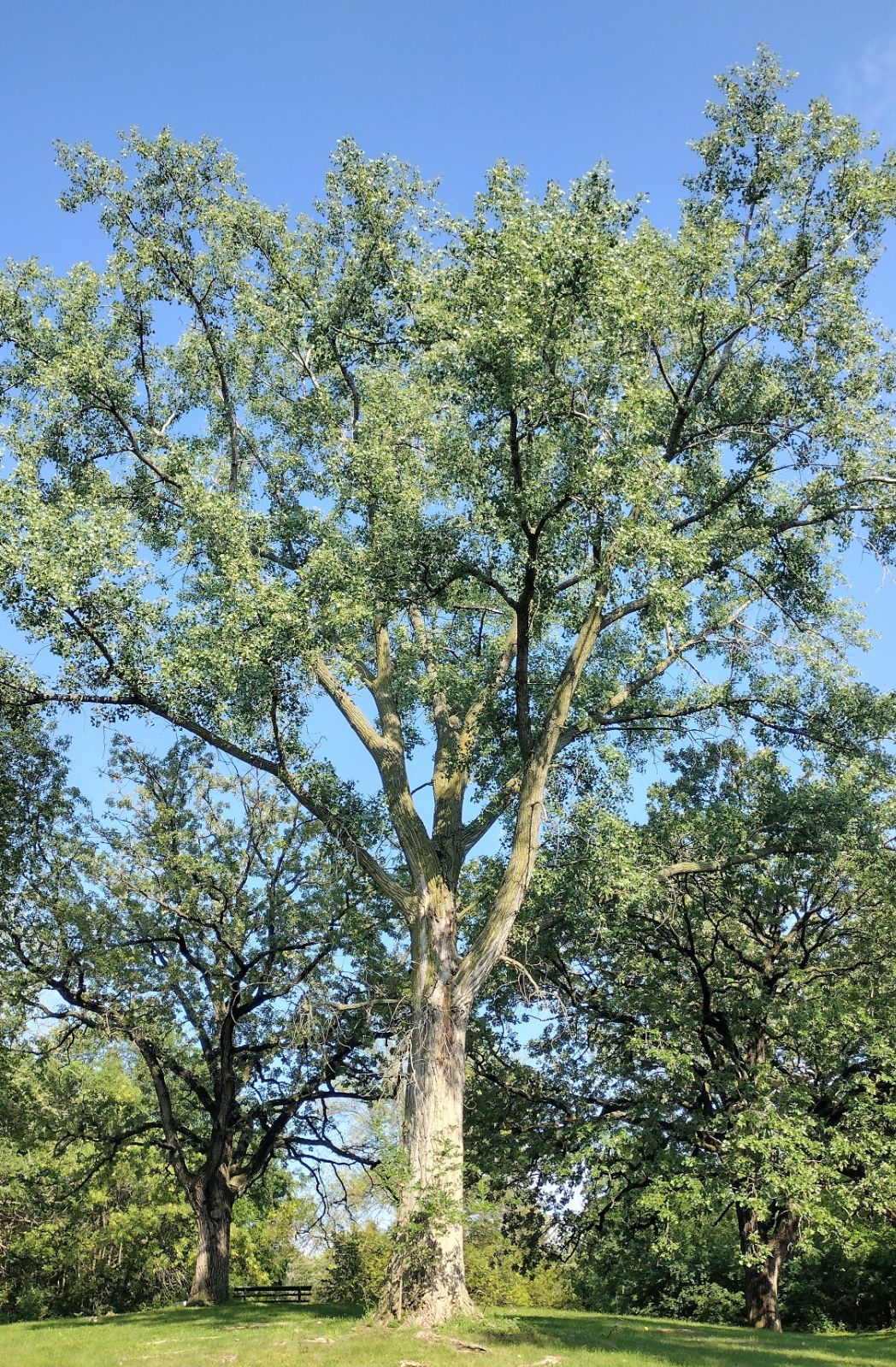Populus deltoides
Credits
Article from Bean's Trees and Shrubs Hardy in the British Isles
Recommended citation
'Populus deltoides' from the website Trees and Shrubs Online (treesandshrubsonline.
Genus
Common Names
- Eastern Cottonwood
Synonyms
- P. monilifera Ait.
- P. nigra var. virginiana Castigl.
- P. canadensis Michx. f., not Moench
- P. deltoides var. monilifera (Ait.) Henry
- P. deltoides var. virginiana (Castigl.) Sudw.
- P. balsamifera var. virginiana (Castigl.) Sarg.
Infraspecifics
Other taxa in genus
- Populus acuminata
- Populus adenopoda
- Populus alba
- Populus angulata
- Populus angustifolia
- Populus balsamifera
- Populus × berolinensis
- Populus × canadensis
- Populus candicans
- Populus canescens
- Populus ciliata
- Populus fremontii
- Populus × generosa
- Populus glauca
- Populus grandidentata
- Populus heterophylla
- Populus koreana
- Populus lasiocarpa
- Populus laurifolia
- Populus maximowiczii
- Populus nigra
- Populus purdomii
- Populus sargentii
- Populus simonii
- Populus szechuanica
- Populus tremula
- Populus tremuloides
- Populus trichocarpa
- Populus tristis
- Populus wilsonii
- Populus yunnanensis
A tree 100 ft or more high in the wild, with a short trunk and massive, spreading branches; bark pale greenish yellow on young trees, becoming grey and deeply furrowed; young stems glabrous, terete or slightly angled; buds brown, lustrous, resinous and balsam-scented, ovoid, acute, the lateral ones flattened. Leaves deltoid or broad-ovate, 3 to 5 in. long and about as wide, abruptly narrowed at the apex to a slender acute point, mostly truncate to shallowly cordate at the base, with two or three glands at the junction between the blade and petiole, medium green and glossy above, paler beneath, glabrous on both sides (or downy when young and more or less persistently downy on the veins beneath in f. pilosa (Sarg.) Sudw.), margins with a translucent border, finely ciliate, crenate-serrate, or crenate-dentate, the teeth with callous, incurved tips; petioles much flattened laterally, 21⁄2 to 4 in. long. Male catkins densely flowered, up to 2 in. long; female catkins 3 to 4 in. long, with distant flowers; scales divided into thread-like lobes. Stamens up to sixty or more, with red anthers. Stigmas three or four. Capsules three- or four-valved.
Native of eastern N. America; introduced, according to Aiton, in 1772. It is a rare tree in this country now, having long ago been displaced by its hybrids with the European P. nigra. From that species it differs in the shape of the leaf, which is very rarely broad-cuneate at the base, in its ciliate margins, and in the presence of petiolar glands. An example at Kew, pl. 1910, measures 75 × 61⁄4 ft (1967).
From the Supplement (Vol. V)
In the Journal of the Arnold Arboretum, Vol. 58, pp. 203–6 (1977), James E. Eckenwalder treats this species as follows:
subsp. deltoides P. angulata Ait.; P. angulata var. missouriensis Henry – Leaves shortly acuminate with usually three to five glands at the junction between blade and petiole. Pedicels in female flowers up to 15 mm long. This, the typical subspecies, ranges from the Gulf coast along the Atlantic seaboard to Massachusetts, inland to Ohio and central Illinois in the north, and to Texas and Oklahoma in the south.
subsp. monilifera (Ait.) Eckenwalder P. monilifera Ait.; P. deltoides var. monilifera (Ait.) Henry; P. sargentii Dode; P. texana Sarg. – Leaves often long-acuminate; basal glands absent or up to two. Pedicels in female flowers short, to 6 mm long. This ranges from the Great Lakes to the prairie states, south to the Panhandle of Texas.
subsp. wislizenii (S. Wats.) Eckenwalder P. fremontii var. wislizenii S. Wats.; P. wislizenii (S. Wats.) Sarg. – This poplar, of no importance to British growers, is mentioned briefly on page 312, under P. fremontii, which Eckenwalder accepts as a distinct species and which in places intergrades with P. deltoides subsp. wislizenii.
'Carolin' Carolina Poplar
Stems of the long shoots strongly angled, almost winged. Leaves of strong shoots rather thick, triangularovate, longer than wide, usually cordate at the base. Petioles and lower veins tinged with red. Male. A large, heavily branched tree, retaining its foliage until late in the autumn. It attains a large size in the warmer parts of Europe, but is rare in this country and not entirely hardy. It is common in southern France, where it was once much planted for timber, but is giving way there to hybrids such as ‘Robusta’, which grow faster and are easier to propagate. It is an old clone of var. missouriensis, introduced to Europe early in the 18th century, and usually grown under the name P. angulata Ait. ‘Carolin’ is its modern clonal name.'Cordata'
Resembling ‘Carolin’, but hardier, easier to propagate, with less angled branches and yellowish green petioles. It also differs in being female. It was described in 1861 from a tree growing in the nursery of Simon-Louis at Plantières near Metz, under the name P. angulata cordata, and was said to have come from the collection of a Monsieur David. It is a parent of P. × canadensis ‘Robusta’. The French authority Pourtet mentions a poplar called ‘Angulata de Chautagne’ which appears to be similar to ‘Cordata’. This was selected around the middle of the last century in the département of L’Ain by the nurseryman Tallissiéu, and cultivated locally.var. missouriensis (Henry) Henry
Synonyms
P. angulata var. missouriensis Henry (July 1913)
P.deltoides var. angulata (Ait.) Sarg. (August 1913)
P. angulata Ait

